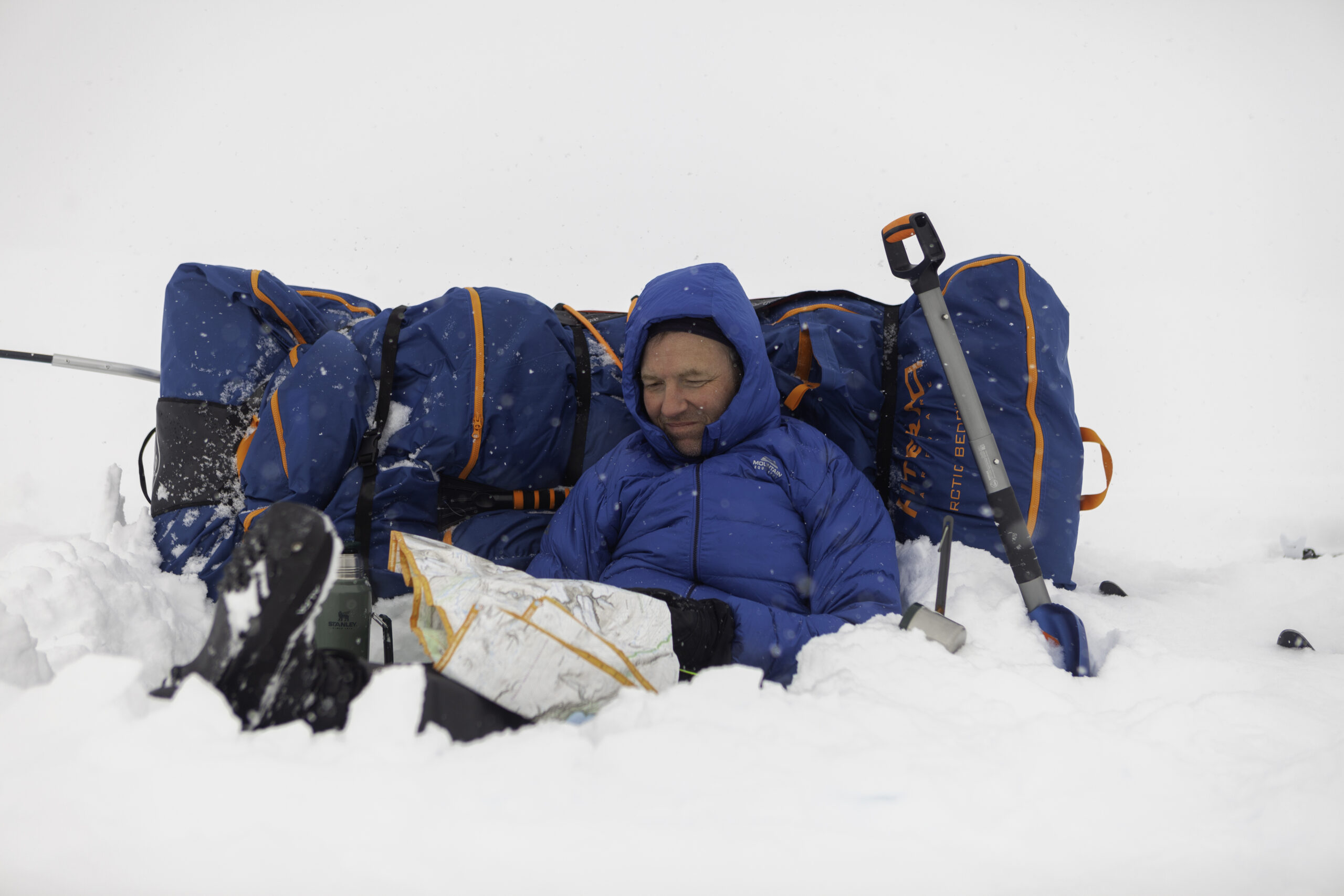Clothing
Clothing for adventure: Follow the layering principle with base, mid, and outer layers to keep warm, dry, and comfortable on every journey.
Multilayer Principle
Are you going to move around a lot with a good chance of getting too warm and sweaty, or will you be standing still for a long time risking getting really cold during the time? A good way to stay warm and dry is to follow the layering principle. Even if you don’t wear all layers it’s a good idea to take base, mid and outer layers with you on all adventures.
Layering basics
- Base layer – wicks sweat off your skin (moving perspiration) and keeps your skin dry.
- Mid layer – an insulating layer which retains body heat to protect you from cold. In general thicker layer equals warmer, however the efficiency of the insulating material is also important. This layer wicks moisture.
- Outer layer – shields you from wind and rain, releases moisture. Often lumped into waterproof/breathable shells, water-resistant/breathable shells and waterproof/non breathable shells.
- Reinforcement – insulating layer. Hat, mittens, shoes.
Material
In addition to the layers you may also want to consider the types of fabric you are wearing. A garment with a weave of wicking or wicking treatment may do wonders pulling perspiration off your skin while still keeping you warm.
- Wool – odourless, itchy for some, keeps you warm even if wet, best warmth, wicks away moisture, doesn’t need to be washed that often.
- Cotton – binds a lot of water, conducts heat away from the body, heavy, dries slowly.
- Synthetic – dries the fastest, warms well in relation to weight, begins to smell quickly.
- Down – retains heat best in relation to weight, airs well, compressible, moisture-sensitive fill power. Collapses when wet.
Helpful Tips & Tricks
- Whole, clean and well-kept clothes work best.
- Drying clothes in front of the fire can be a good alternative. Wear your pants, mittens or shoes as you dry them by the fire. If it gets too hot for you, then it is too hot for the material as well. When you wear the garment you also dry them from the inside at the same time. Wearing socks on your hands in front of the fire or put them on a warm Nalgene bottle in your sleeping bag during the night is also a good alternative.
- Flat knitted wool is less airy and is in closer contact with the body and therefore wicks better, compared with circular knitted or terry-knitted wool that are more airy and really warm in comparison. There is also woolnet, double-wool and so on for different activities and weather.
- You want the base layer to be snug so that it comes in contact with your skin, thereby being able to wick moisture, but it should never be uncomfortable or restrictive either.
- Your middle layer and outer layer can really fit however you prefer, but most people want them to be neither loose nor tight. One way to think about it is that a proper fitted middle layer or outer layer should be almost unnoticeable. It shouldn’t get in your way or be so tight that it restricts movements.
- Make lists before going out. Take notes during. Follow-up afterwards.
- When you try out new clothes make it as realistic as possible.
- Try the hood. Does it follow you as you turn your head in different directions? There are often zippers in the armpits to extract excess heat. They are available in different lengths and angles, do they fit you? Does the fabric go down over your back? Are the arms of the jacket long enough if you crouch down and pretend to place the tent pegs, are the jacket sleeves long enough if you lean forward from the hip and pretend to hold a bicycle handlebar? Things like that can make all the difference later!
- Stretch in your trousers could be nice. While walking you sometimes lift your knees up high to get up on things. Stretch makes it so much easier. Try a pair of pants with stretch and put your cell phone and wallet in the pockets. Get up on a pallet or chair (90 degrees in your knee). Then try a pair without stretch. Is there a difference? Does it matter? When windy, areas with stretch get much colder but it’s really nice while walking. Some trousers have zippers along the thighs so you can vent out excess heat. Would this work for you?
- There are many different hard-shell jackets on the market. To keep it simple a shell jacket can be made of 2, 2,5 or 3-layers, and they all have the same intention — keeping you protected from the elements. 2,5-layer garments have a print on the inside that protects the membrane from wear and tear and helps moisture transmission. For most people a 2-layer jacket is a good balance of being a packable size, price and quality. If, however, you require a jacket that needs to take a lot of punishment on a daily basis, the more expensive 3-layer might be the better option.
- Softshell fabric is different in that it is often more stretchy and breathable but not water-or windproof. The flip side of breathability though is that wind blows right through and can steal warmth.
- DWR. Durable water-repellent is a chemical application to the face fabric of any outerwear piece. DWR enables water to bead on your jacket and roll off. It can be reactivated or reapplied when you see dark spots on your jacket where water is soaking in.
If you are into wearing heavy backpacks then the 3-layer variant is sturdier, but in some 3-layer jackets you could sound “crunchy” as you move around because of the fabric. Especially in older models.







